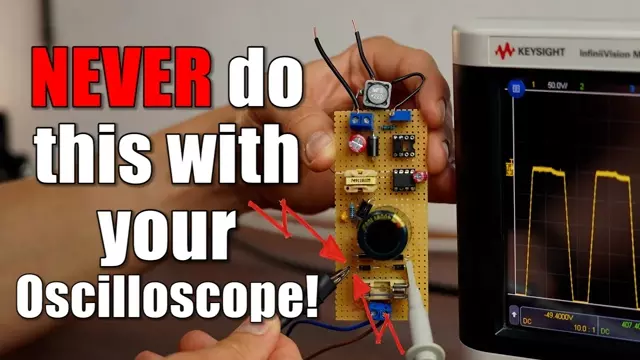2021-08-08
[public] 300K views, 19.4K likes, dislikes audio only
Visit Brilliant.org and get a 20% discount: https://Brilliant.org/GreatScott/
Previous video: /youtube/video/_lDm0RV9IV8
Current Clamp video: /youtube/video/ohQF79cMODw
Power form video: /youtube/video/cxXmWZDwNEs
Facebook: https://www.facebook.com/greatscottlab
Twitter: https://twitter.com/GreatScottLab
Support me for more videos: https://www.patreon.com/GreatScott?ty=h
You can get a decent (4 channel, low cost) scope here (affiliate links):
https://s.click.aliexpress.com/e/_Aqd2VG
You can get a differential probe here (affiliate links):
https://s.click.aliexpress.com/e/_9IoEt4
Websites which were shown in the video:
https://www.batronix.com/shop/oscilloscopes/DSO.html
https://www.batronix.com/shop/oscilloscopes/Keysight-MSOX3054T.html
https://www.batronix.com/shop/oscilloscopes/Keysight-DSOX1204G.html
https://www.batronix.com/shop/oscilloscopes/Rigol-DS1052E.html
In this electronics basics episode we will be having a look at the biggest mistake you can do when working with an oscilloscope. But I will not only show you how to do safe mains voltage measurements but also show you all the basics when it comes to oscilloscopes. That means I will show you how to choose one, how to do simple voltage and current measurements and finally how FFT works. I will explain passive probes, triggering, voltage & time division, measuring functions, the cursor function, AC & DC coupling and single mode capturing. Let's get started!
Thanks to Brilliant.org for sponsoring this video.
Music:
2011 Lookalike by Bartlebeats
0:00 The big mistake when using an oscilloscope
1:08 Intro
2:02 How to choose a scope?
4:44 Passive probes & scaling factor
5:55 Trigger
6:41 Voltage division
7:11 Time division
7:37 Measure function
7:47 Cursor function
8:19 AC & DC coupling
9:08 Single mode capturing
9:36 Current measurement
10:16 Safe mains voltage measurement
11:37 Differential probe
11:52 Math & FFT
/youtube/video/ohQF79cMODw
/youtube/video/cxXmWZDwNEs
/youtube/video/d58GzhXKKG8?t=0
/youtube/video/d58GzhXKKG8?t=122
/youtube/video/d58GzhXKKG8?t=284
/youtube/video/d58GzhXKKG8?t=355
/youtube/video/d58GzhXKKG8?t=401
/youtube/video/d58GzhXKKG8?t=431
/youtube/video/d58GzhXKKG8?t=457
/youtube/video/d58GzhXKKG8?t=467
/youtube/video/d58GzhXKKG8?t=499
/youtube/video/d58GzhXKKG8?t=548
/youtube/video/d58GzhXKKG8?t=576
/youtube/video/d58GzhXKKG8?t=616
/youtube/video/d58GzhXKKG8?t=697
/youtube/video/d58GzhXKKG8?t=712
/youtube/channel/UC6mIxFTvXkWQVEHPsEdflzQ
https://www.patreon.com/GreatScott
/youtube/video/_lDm0RV9IV8

